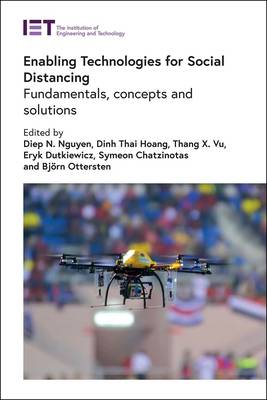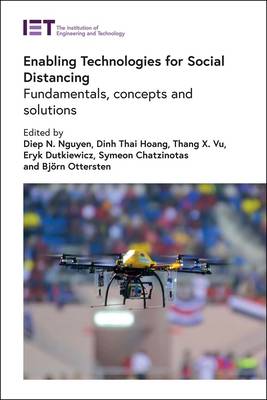
- Afhalen na 1 uur in een winkel met voorraad
- Gratis thuislevering in België vanaf € 30
- Ruim aanbod met 7 miljoen producten
- Afhalen na 1 uur in een winkel met voorraad
- Gratis thuislevering in België vanaf € 30
- Ruim aanbod met 7 miljoen producten
Enabling Technologies for Social Distancing
Fundamentals, Concepts and Solutions
Omschrijving
The latest advances in several emerging technologies such as AI, blockchain, privacy-preserving algorithms used in localization and positioning systems, cloud computing and computer vision all have great potential in facilitating social distancing. Benefits range from supporting people to work from home to monitoring micro- and macro- movements such as contact tracing apps using Bluetooth, tracking the movement and transportation level of a city and wireless positioning systems to help people keep a safe distance by alerting them when they are too close to each other or to avoid congestion. However, implementing such technologies in practical scenarios still faces various challenges.
This book aims to lay the foundations of how these technologies could be adopted to realize and facilitate social distancing to better manage pandemics and future outbreaks. Starting with basic concepts, models and practical technology-based social distancing scenarios, the authors present enabling wireless technologies and solutions which could be widely adopted to encourage social distancing. They include symptom prediction, detection and monitoring of quarantined people and contact tracing. In the future, smart infrastructures for next-generation wireless systems should incorporate a pandemic mode in their standard architecture and design.
Specificaties
Betrokkenen
- Uitgeverij:
Inhoud
- Aantal bladzijden:
- 306
- Taal:
- Engels
- Reeks:
Eigenschappen
- Productcode (EAN):
- 9781839534904
- Verschijningsdatum:
- 3/08/2022
- Uitvoering:
- Hardcover
- Formaat:
- Genaaid
- Afmetingen:
- 157 mm x 239 mm
- Gewicht:
- 657 g

Alleen bij Standaard Boekhandel
Beoordelingen
We publiceren alleen reviews die voldoen aan de voorwaarden voor reviews. Bekijk onze voorwaarden voor reviews.










